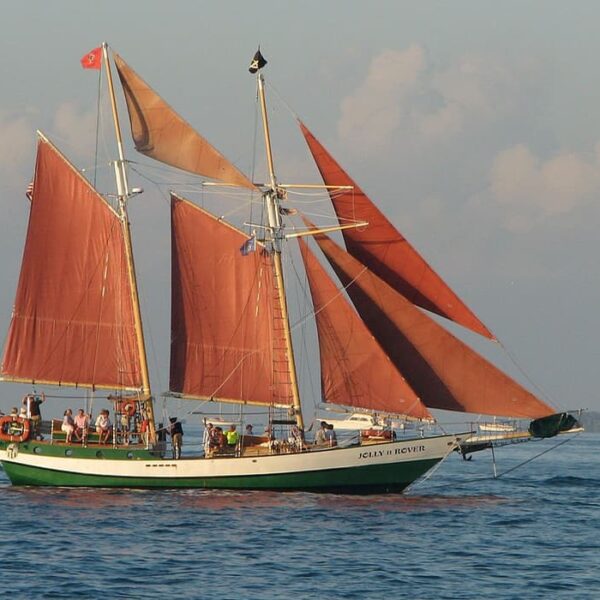Chuan in the Chinese. Djong by the Malays. A light boat with a blunt bow. A wooden light sailing cargo ship of two or four masts with a blunt bow for river and coastal sea navigation, widespread in Southeast Asia, Japan and China.
Very wide, almost rectangular in plan, raised bow and stern, quadrangular sails made of mats and bamboo slats. In the era of the sailing fleet, the junk was used for military purposes.
Today’s junks are used to carry cargo, and often serve as dwellings as well. Junks have a shallow draft and a capacity of up to 600 tons. Shipbuilding in China, according to many historians, began earlier than in Egypt. The Chinese used their ships for long voyages.
Reliable information on the voyage of the Chinese to the overseas country of Fusan, which is very similar to the description of Mexico. That was several millennia before Christ. More than 300 kinds of junks were created in China, unsightly in appearance, with sails made of matting, but exceptionally seaworthy vessels. Preserved to this day, they impress with their seaworthiness, capacity and practicality.
All of them – regardless of their purpose – were structurally very similar: flat bottom, vertical hull sides, slightly pointed bow, blunt, stumped stern with cabins and batten sails woven from reeds. As in Europe, eyes were often drawn on the cheekbones near the bow.
The superstructures at the stern protruded slightly beyond the hull. They housed crew and provisions. Junks with a capacity of 1,000 men are mentioned. The design of a junk is so rational that it survived almost unchanged until the present day. The junk’s armament is the rake armament. The Chinese batten sail (commonly known in Western Europe as the junk armament) is effective when sailing on both sharp and full courses to the wind, is easily corrugated and maintained by a small crew.
Due to the fact that the sail is made up of parts and the rigidity of the structure is provided by the bamboo, it can be easily and quickly repaired. This simple and effective armament has never before been used on workboats in other parts of the world.
In the 15th century, the Chinese sailed their ships, the junks. They were considerably larger than European ships: some junks were more than 10 times the displacement of the ships of Vasco da Gama, the Portuguese navigator who discovered the sea route from Europe to India.
These ships were flat-bottomed and wide, making them very manageable and roomy. The broad stern of junks was raised high and the bow was lowered. They were usually painted with images of dragons and other mythical creatures. Junks had special watertight compartments. They had three to five masts with rectangular sails. The masts were made of bamboo poles, and the sails were woven from reed mats and resembled fans. And they were rolled up into a scroll like fans. The sails of junks could unfold to better catch the wind. Reed mats could withstand even strong gusts of wind, but they made the ship heavier, so, with the lapse of time, they were replaced by cloth sails, which considerably improved the speed of junks.
Venetian traveler Marco Polo, who visited China at the end of the 13th century, was astonished by such feature of junks as the presence of spare masts on which more sails could be placed.
At first, the Chinese sailed junks on rivers and near the coast, but over time junks began to be used in other Southeast Asian countries and made longer sea voyages on them. They were used mainly as transport and merchant vessels, and less frequently as military vessels.
